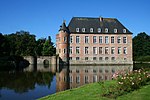
Limburg, also known as Belgian Limburg, is a province in Belgium. It is the easternmost of the five Dutch-speaking provinces that together form the Region of Flanders, which is one of the three main political and cultural sub-divisions of modern-day Belgium. As of January 2024, Limburg had a population of 0.9 million.

Bilzen is a city and a municipality located in the Belgian province of Limburg.

Rumbeke Castle is a historical building in Rumbeke in West Flanders, Belgium, one of the oldest Renaissance castles in the country. Rumbeke Castle is situated at an altitude of 25 meters.

Alden Biesen is a 16th-century castle in the small village of Rijkhoven, municipality of Bilzen, province of Limburg, Belgium.

Rijkhoven is a village in the Bilzen municipality of the Limburg province in the Flemish Community of Belgium.

The House of Merode is one of the most prominent families of the Belgian nobility. It originates from the village of Merode, which is now in the municipality of Langerwehe in Germany. Over the past five centuries, different branches bore noble titles and had estates on the territories of the modern-day states of Germany, Belgium, the Netherlands, France and Austria. Through marriage, the house is connected with many prominent European noble families. The House of Merode played an important role in the history of the Southern Netherlands and the Kingdom of Belgium.
Arnoud Eugène van der Biesen was a sailor from the Netherlands, who represented his native country at the 1920 Summer Olympics in Ostend, Belgium.
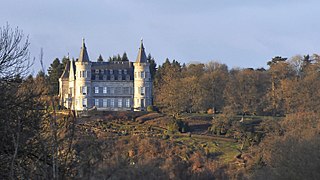
The Royal Castle of Ciergnon or Ciergnon Castle is a residence and summer retreat of the Belgian royal family situated near the town of Ciergnon in the municipality of Houyet, Namur Province, Wallonia. The castle is a property of the Belgian Royal Trust.
SS Louis Sheid was a 6,057 ton Belgian steamer that ran aground off Devon after escaping U-47 following the rescue of the captain and crew of the freighter MV Tajandoen on 7 December 1939.

Hasselbroek Castle, also Hasselbrouck Castle is a 17th-century country house in Hasselbroek, in Jeuk, a part of the municipality of Gingelom, province of Limburg, Belgium.

Laarne Castle is a water castle near Laarne, East Flanders in Belgium near to the provincial capital of Ghent. Laarne Castle is situated at an elevation of 3 meters.
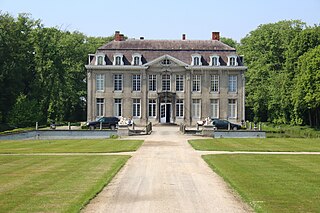
Leeuwergem Castle is a stately home in the village of Elene in the municipality of Zottegem, East Flanders, Belgium.
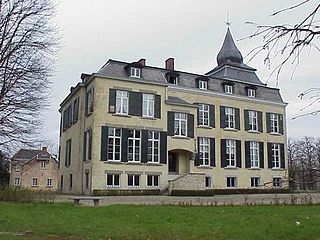
Ommerstein Castle is a castle in the village of Rotem in the municipality of Dilsen-Stokkem, province of Limburg, Belgium.
Rameyen Castle is a castle on a lake in Gestel, part of the municipality of Berlaar, in the province of Antwerp, Belgium. It was once owned by Nicolaas Rubens, Lord of Rameyen, who died in the castle. Nicolaas was the second son of Peter Paul Rubens.
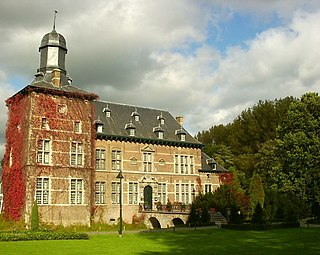
Rullingen Castle is a castle in Kuttekoven in the municipality of Borgloon, province of Limburg, Belgium. Its situation in the valley of the Herk is very scenic.
Luc Ponet is a Belgian organist, academic and board member of Nationaal Instituut voor de Orgelkunst.

Jozef "Jef" Schils was a Belgian cyclist.
Walther Damery, was a Southern Netherlandish Baroque painter.

Leignon Castle is a nineteenth century castle located in Wallonia, in the Namur province of Belgium, a few kilometers south of Ciney. It is a private castle with restricted access to the public.

Stapelen Castle is a castle in Boxtel in the Dutch province of North Brabant. It is known as monastery and headquarters of the Dutch Assumptionists.
This page is based on this
Wikipedia article Text is available under the
CC BY-SA 4.0 license; additional terms may apply.
Images, videos and audio are available under their respective licenses.

